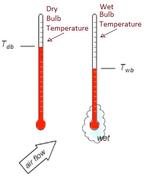Understanding LED integrating Sphere, its applications and Benefits
Advertisement
An LED Integrating Sphere is an optical device used to measure the total luminous flux, spectral power distribution, and color characteristics of LED light sources. It is a hollow spherical chamber with a highly reflective diffuse white coating on the interior surface, ensuring uniform scattering of light.
Key Features
- Provides accurate total light output measurement regardless of beam direction.
- Eliminates angular dependency in light measurements.
- Used in conjunction with spectrometers and photometers.
Applications
- LED quality control and performance testing.
- Photometric and radiometric evaluations.
- Color rendering and temperature analysis.
Benefits of LED Integrating Sphere
Following are some of the advantages of LED lighting Sphere:
- Accurate Luminous Flux Measurement : Ensures precise measurement of total light output from LEDs, independent of beam direction.
- Uniform Light Distribution : The inner reflective coating diffuses light uniformly, reducing measurement errors.
- Eliminates Angular Dependency : Measures light output without being affected by the LED’s emission angle.
- Supports Spectral Analysis : Enables evaluation of color properties, spectral power distribution, and color rendering index (CRI).
- Fast and Reliable Testing : Provides quick and repeatable measurements for LED performance verification.
- Versatile Application : Used in LED manufacturing, quality control, R&D, and certification processes.
- Compatible with Various Light Sources : Works with LEDs, lamps, and other light-emitting devices for photometric and radiometric analysis.
Conclusion
The LED Integrating Sphere is a crucial tool for accurately measuring the luminous flux, spectral characteristics, and color properties of LED light sources. Its ability to provide uniform light distribution and eliminate angular dependencies ensures reliable and precise photometric and radiometric evaluations. With applications in LED manufacturing, quality control, and research, it plays a vital role in ensuring compliance with industry standards. Its efficiency, versatility, and accuracy make it an indispensable instrument in modern lighting technology.
 T&M
T&M 



